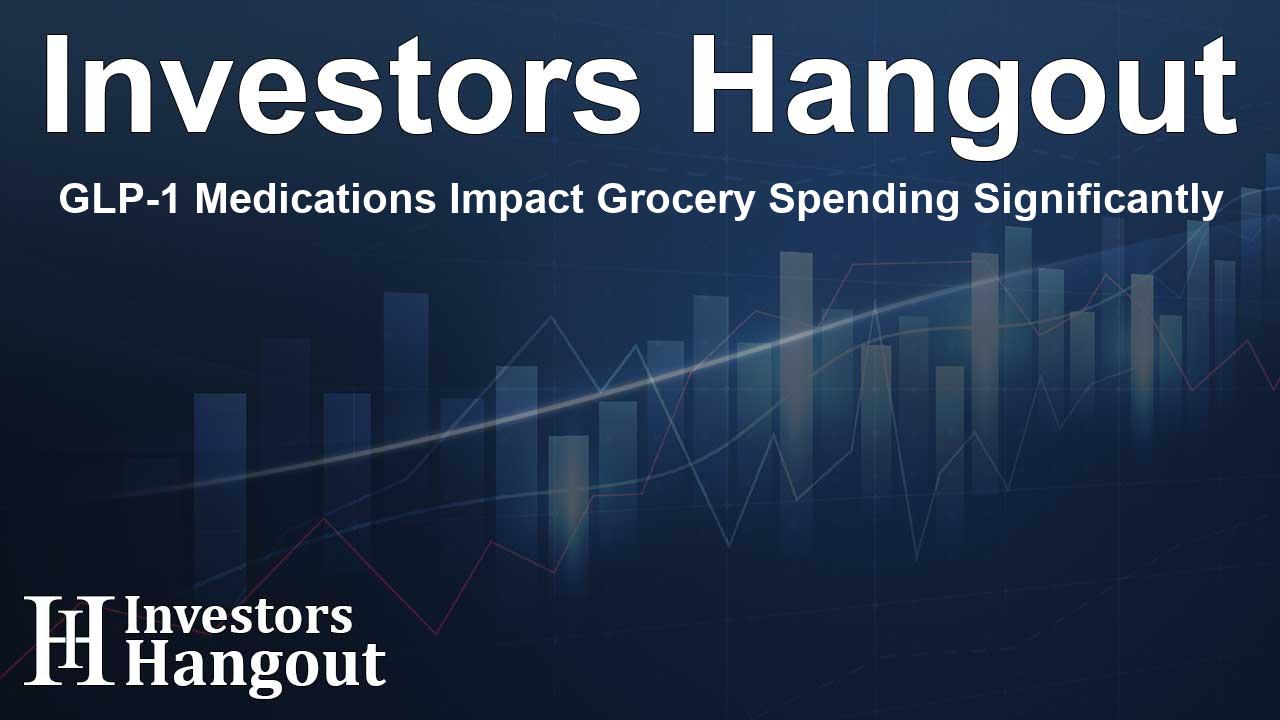GLP-1 Medications Impact Grocery Spending Significantly

Impact of GLP-1 Medications on Grocery Spending
GLP-1 medications are reshaping consumer behavior, resulting in a staggering $6.5 billion reduction in U.S. grocery spending. This substantial change is primarily due to weight-loss drugs that have altered purchasing patterns across the retail landscape.
Current Trends in Usage
According to Big Chalk Analytics, users of glucagon-like peptide-1 receptor agonists, such as Novo Nordisk A/S’s Ozempic and Wegovy, along with Eli Lilly and Co.’s Mounjaro and Zepbound, have notably decreased their grocery expenditures. A recent survey reflects that about 8.3% of Americans plan to initiate these medications, hinting at a potential for another $4.4 billion to $10.8 billion drop in grocery spending.
User Penetration and Grocery Sales Impact
Currently, around 11.2% of U.S. adults are using GLP-1 medications, with forecasts suggesting that this figure could reach 20% within the next year. The presence of these drugs has been linked to a grocery volume loss ranging between 1.2% and 2.9%, while dollar sales across various categories have seen a downswing of 0.9% to 2.3%.
Expert Insights on the Changes
Rick Miller, a partner at Big Chalk Analytics, notes, “GLP-1s have crossed the household-penetration threshold where their impact on grocery volumes and dollar sales can no longer be ignored. This is measurable, structural change.” This statement indicates a fundamental shift in how consumers approach grocery shopping, sparked by these medications.
Behavioral Preferences Among GLP-1 Users
The appetite-suppressing nature of GLP-1 medications profoundly reshapes consumer preferences. Users are increasingly opting for smaller portions across various categories: they have shown a 65% increase in purchasing smaller cereal packages, a 48% preference for reduced sizes of lunch meat, and a 36% inclination toward smaller drink servings. These trends highlight the changing landscape of grocery purchases as people's consumption habits adapt to their health goals driven by medication.
Market Considerations and Future Challenges
As grocery stores register declining volumes, experts anticipate that this might eventually lead to lowered prices, although Kevin Thompson, CEO of 9i Capital Group, expressed skepticism about this materializing anytime soon. Meanwhile, the pharmaceutical sector is poised to face further challenges, particularly given discussions surrounding potential tariffs on drug manufacturers that could inflate costs and spark supply chain disruptions, potentially affecting companies like Novo Nordisk.
Long-term Adherence and Accessibility Issues
Data reveals that long-term adherence to GLP-1 obesity therapies presents challenges, as only 8.1% of patients sustain their regimen after three years. However, the persistence rate for one-year use of Wegovy has considerably improved from 33.2% in 2021 to 62.7% in 2024, indicating that more patients are finding ways to maintain their treatment plans.
Frequently Asked Questions
What are GLP-1 medications?
GLP-1 medications are prescription drugs used to manage weight loss and diabetes by mimicking the effects of the glucagon-like peptide hormone, which regulates appetite and insulin secretion.
How much have grocery expenditures dropped due to GLP-1 usage?
Grocery expenditures have dropped approximately $6.5 billion as a result of the shift in consumer purchasing habits influenced by GLP-1 medications.
What changes in purchasing behavior have been observed?
Consumers using GLP-1 medications are trending toward smaller package sizes and portion reductions across various food categories.
What is the forecasted increase in GLP-1 medication users?
It is anticipated that the percentage of U.S. adults using GLP-1 medications could rise to 20% within the next year.
What are some challenges patients face with GLP-1 therapies?
Long-term adherence poses significant challenges, with data indicating that only a small percentage of patients maintain their therapy after three years, although there has been improvement in one-year persistence rates.
About The Author
Contact Riley Hayes privately here. Or send an email with ATTN: Riley Hayes as the subject to contact@investorshangout.com.
About Investors Hangout
Investors Hangout is a leading online stock forum for financial discussion and learning, offering a wide range of free tools and resources. It draws in traders of all levels, who exchange market knowledge, investigate trading tactics, and keep an eye on industry developments in real time. Featuring financial articles, stock message boards, quotes, charts, company profiles, and live news updates. Through cooperative learning and a wealth of informational resources, it helps users from novices creating their first portfolios to experts honing their techniques. Join Investors Hangout today: https://investorshangout.com/
The content of this article is based on factual, publicly available information and does not represent legal, financial, or investment advice. Investors Hangout does not offer financial advice, and the author is not a licensed financial advisor. Consult a qualified advisor before making any financial or investment decisions based on this article. This article should not be considered advice to purchase, sell, or hold any securities or other investments. If any of the material provided here is inaccurate, please contact us for corrections.
